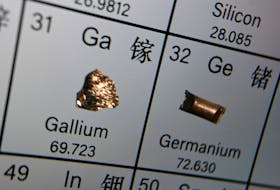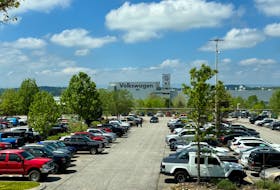NORTHERN PENINSULA, NL – In the midst of an ever-changing fishery, prospects for aquaculture projects along the Great Northern Peninsula are improving.
Cyr Couturier, an aquaculture research scientist and chair of aquaculture programs with the Marine Institute of Memorial University, says the possibilities are there, but can only succeed with hard work and serious investment.
“There is some potential for different types of aquaculture, land-based as well as ocean-based,” said Couturier. “It all depends on what species you’re talking about.”
“But it’s not for the faint of heart. If people are encouraged to invest and have the know-how, I’m sure they could do something.”
The need for quality
While there is much talk of the Atlantic cod’s increasing quantity, the major need to make Newfoundland and Labrador a top competitor in today’s cod industry is catching better quality fish.
“Better markets are what is needed; the market for cod now is just for premium product,” said Couturier. “And Newfoundland fishermen do not often do premium product.”

The use of gale nets typically comes with a B Grade for quality. Iceland and Norway have waned out this method of catching cod for more advanced forms of technology that allow a fresher and higher-quality cod catch.
The most commonly used and efficient of these technologies is the autojigger.
But one aquaculture method has also been used to ensure better quality of fish. That method is cod ranching.
To compete with countries like Norway and Iceland, Newfoundland and Labrador harvesters need to build a market that can match the quality of fish these countries are producing.
As well bringing in autojiggers, Couturier says ranching could be another way of improving cod quality to a level where harvesters could sell for $3 or more a pound.
“The province is not really known as a good, high-quality producer in the market. All that has to change before the [cod] fishery can come back,” Couturier said.
Cod ranching involves taking small wild cod resources and caging them. The fish are fed well and fattened up, and put on the market for a strong price. Often, this price can be triple or quadruple the average.
It is a method sometimes utilized when quantity of fish is particularly low, to ensure harvesters can still have a financially strong season. According to Couturier, following the moratorium over 400 fishermen in the province attempted to break into cod ranching.
But breaking into this industry requires a serious amount of know-how and investment. Cod ranchers are required to have an aquaculture license and a fishing license, as well as required infrastructure like cages.
Couturier says the first requirement for getting an aquaculture license is a location, and with the Northern Peninsula, ocean shorelines are rarely far from sight in most communities.
Weather will also be a determining factor.
“There’d have to be areas where people could take care of the fish on a regular basis,” said Couturier. “The areas on the Northern Peninsula where you could put a fish cage could be done for maybe six months of the year.”
With the expenses involved, harvesters on their own would have great trouble making a go at cod ranching, he said. The common protocol is to find a processor to partner with.
“All of this stuff will cost a lot of money, and I don’t know if any small boat harvester will want to get involved with it,” Couturier said. “Often, the harvester will partner with large processors who supply the cages, and in return the harvester will capture the fish.
“It’s their fish until they put it in the market, then the processor will pay them. If they partner with a processor then they can get access to capital so long as the processor agrees to take the fish.
“That’s the only way you can do it in this province.”
Herring or capelin is the common fish used to fatten up the cod. If there is a market for the fish, Couturier estimates at least $300,000 would have to be invested to go ahead with a cod ranching operation.
Also, to make ranching more viable, Couturier says the season to sell and catch codfish in the province would have to be more broadly extended.
Potential risks to ranching
One of the potential dangers of ranching is the health risks the practice can pose to the fish.
Because the fish are kept in an isolated environment, there is a higher chance of bacterial disease, parasites and sea louse spreading.
Fish become more susceptible to these viruses when under stress. If the fish are overcrowded in these cages, or are without their preferred water temperature, their stress levels rise.
In the salmon farms of British Columbia, vaccines have been created to combat common bacteria that affect salmon. To deal with the threat of sea louse, which are not often a problem for cod, lumpfish can be brought in to eat away at any sea louse.
Other aquaculture potential
While cod dominate much of the conversation when it comes to the future of Newfoundland and Labrador’s fishery, aquaculture opportunities for the Northern Peninsula extend far beyond it, said Couturier.
Now that is often marketed as a “superfood,” he says seaweed is growing in demand.
“They call it sea vegetables, and what many people do now is make it into products like sea flakers, seaweed salads, and these kinds of things,” said Couturier. “And it can actually grow better in the winter.
“There’s potential for those kinds of farming, it’s a great small business for a couple of people anyway.”
Daniel’s Harbour has had success with its salmon hatchery, which Couturier sees as a good sign of potential for another hatchery in the area.
He also sees some aquaculture capabilities in the town of St. Paul’s.
“St. Paul’s would be a potential spot to grow oysters,” Couturier said. “Based on some previous analysis it’s warm enough and I know people have thought about it.”
[email protected]









